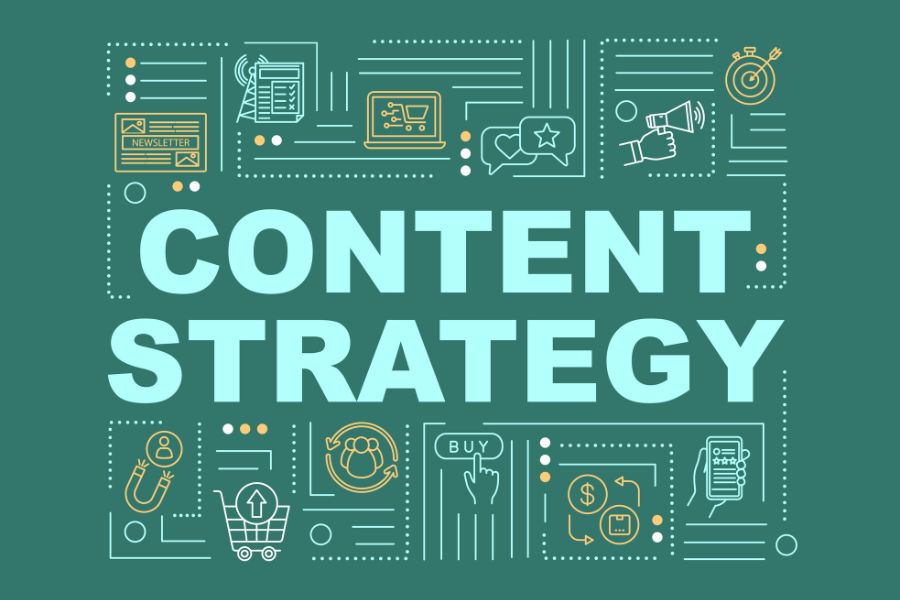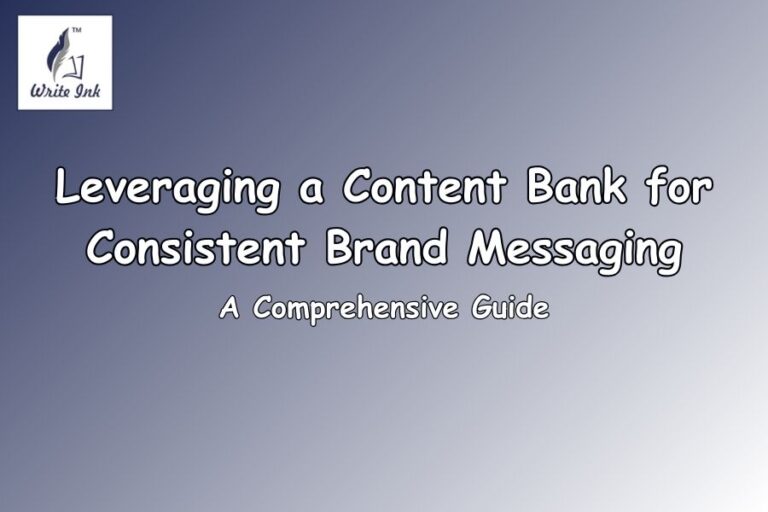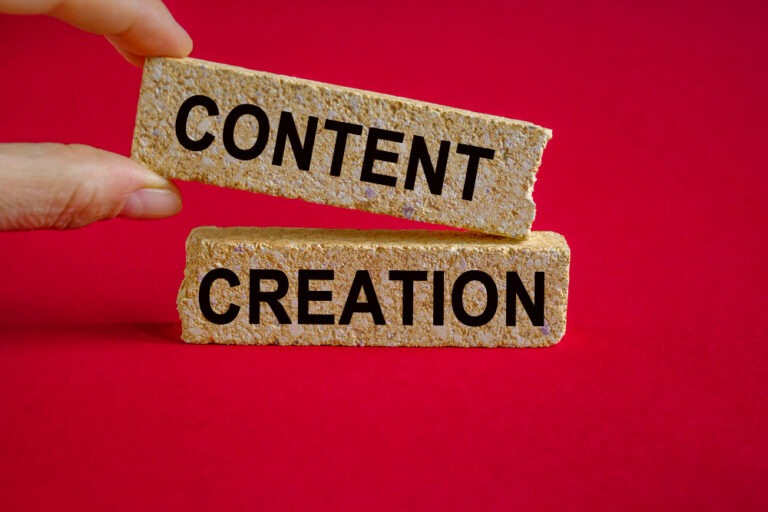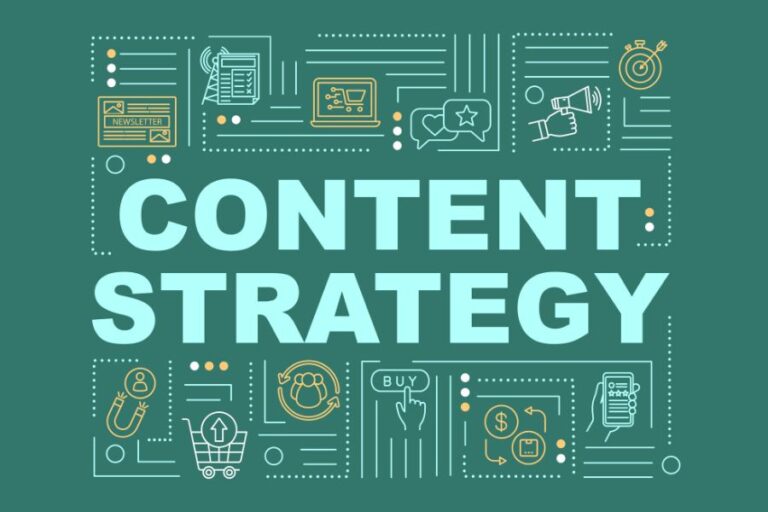“The key ingredient to better content is separating the single from the stream.”

And that’s where a content strategy steps in.
Content is an inseparable aspect of your digital product. It will help you create websites and business apps and build trustworthy social media. However, content created with a purpose confuses the audience and negatively impacts the credibility of your offerings. Thus, it would be best if you had a well-thought-out strategy that builds a foundation for creating powerful content.
Let’s explore the peculiarities and importance of content strategy, tips for creating one, and various tools for developing one from scratch.
What is Content Strategy?
A content strategy is an approach to creating, managing, and circulating content. It gives you an outline for content creation, distribution, and optimisation. It will tell you why you need to create content and define the purpose behind every piece that your audience reads. This is the very reason why we are writing a blog on the importance of content strategy.
A content strategy for B2C and B2B brands might differ, but the baseline will be the same. Let us understand the components of a content strategy here.
Definition and components of content strategy
Your content strategy is an overarching guide that decides your approach to content. Here are the essential components you must consider to establish a content strategy.
- SMART Goals
Establishing SMART goals is the key to creating a winning content strategy. SMART stands for specific, measurable, achievable, relevant, and time-bound goals. These objectives will ensure that your content strategy is focused and aligned with your broad business objectives.
- Market and competitive research
A detailed and well-thought-out content strategy requires detailed market and competitive research. The research will help you extract valuable insights into your target audience, the latest topics, and competitors’ tactics.
- Ideal buyer personas
Before producing content for your audience, you should know who they are. Hence, it would be best to create an ideal buyer persona. A buyer persona is a fictional representation of your ideal user, and you can define it based on their goals, demographics, challenges, and preferences.
- Brand voice and tone
You must maintain a consistent brand voice and tone to ensure that your audience understands your message correctly and recognises your brand every time they come across your content. A consistent brand voice and tone will build trust and loyalty with your target audience. This process will make your content stand out, recognisable, and always aligned with your brand values.
- Content calendar
A content calendar is an indispensable part of your content strategy. It will help you plan your content, making content strategy less tedious and stressless. A calendar can be a digital document that maps out content topics, formats, publishing dates, and who is assigned to them.
- Reporting and analytics
A successful content strategy also needs tracking and analytics. You should make all the efforts to consistently measure the performance of your content and discover what’s working for you and what’s not. The insights further help you make informed decisions about content production as well as distribution across various marketing channels.
While the use and number of components may vary, the importance of content strategy and its role in marketing cannot be denied.
Difference between content strategy and content marketing
Despite plenty of literature on content strategy and marketing, even experienced marketers use content strategy and content marketing interchangeably. Both of these are closely related to each other but are different from each other. Let us tell you what is the importance of content strategy in content marketing.
So, how does a content strategy differ from content marketing? The answer is simple: a content strategy is a properly thought-out document established for the success of your content marketing campaign. Content marketing is all about the campaign, and it comes after the strategy.
Pro tip: Do not try marketing without a strategy; do not bother strategising without marketing.
Overall, it would be best if you had both of the things to succeed as a content marketer.
Importance of content strategy

A seasoned content marketer knows the value of a detailed content strategy. Developing one will help you generate more leads, build trust and loyalty, and create lasting relationships with your clients. Overall, a content strategy makes your life easier and content more compelling.
Here are some of the compelling reasons to start working on your content strategy now:
Enhanced audience engagement
The importance of a content strategy lies in the fact that it helps you target your users with pre-planned messages, leading to more conversions and improved engagement. When you have a content outline in place, you will always stay on top of the latest topics, customer preferences, and what your competitors are doing and post according to schedule. This will help you keep your brand engagement high.
Improved SEO and search rankings
SEO is not essential, said no content marketer ever. Because SEO is one of the most critical aspects of content marketing, you create valuable and informative content for your audience. However, only exemplary SEO efforts will ensure that your content reaches the audience at the right time. You can quickly identify and incorporate your SEO process into your content strategy that helps you improve your online rankings.
Consistency in brand messaging
Well, this goes without saying. A content strategy is essential to keep our brand messaging consistent. We cannot emphasise enough the importance of having a brand voice and tone. With a well-defined brand voice and tone, you can ensure that your audience recognises you with every piece of content published online. Content strategy plays a crucial role in maintaining a consistent brand voice and tone.
Better content quality and relevance
A content strategy will let you produce content that converts, which means with the help of a content strategy you can create better quality content with more relevance. The strategy will keep you updated with the type of audience you are dealing with, the tone of your content, the style and formatting for each type of content, and the distribution of it all. When everything is streamlined, the relevance and value of your content go high.
Efficient use of resources and budget
Creating good content requires the perfect balance of time, money, and resources. With ineffective content creation, your ROI will go down. And that’s where a content strategy comes to your rescue. It not only helps you in effective content creation but also guides you in utilising the resources available within the budget assigned.
Need we say more? The importance of content strategy is evident. Now, let’s move on to how we can implement it.
Steps to Develop an Effective Content Strategy
Now that we know the importance of content strategy in place, it is time to understand the detailed process of creating a content strategy:
Setting clear objectives and goals
Setting objectives and goals is important to achieving the desired outcomes. Thus, with clearly defined outcomes, you can shape your content strategy to achieve them sooner. That said, setting clear objectives and goals is the first step in creating a detailed content strategy.
Think about what you want from your content. Use the SMART methodology we talked about above to define your business goals. For instance, a simple goal of your content could be achieving 50% more leads in the upcoming business quarter.
Understanding your target audience
Now that your overarching objectives are defined, who will help you achieve those? Your audience. Hence, it is time to create an ideal buyer persona, who is a perfect customer for your products and services. Dive deep into the mindset and psychology of your target audience and define it well. Audience research will play a significant role in adding efficacy to the content created.
Conducting a content audit
Before creating a strategy to develop new content, we suggest you review what you have already done so far. Take note of the types of content you have made, the platforms where your content is showing up, the performance of your content, and how your audience is currently responding to the content. Now, take a step ahead and find out why your content has underperformed.
This type of assessment for your current library will help you gather information and help you create content that your target audience wants to read.
Defining content types and formats
Here, it would be best if you defined the types of content you want to create and in which format you want to shape it. Think of social media posts, articles, blogs, press releases, white papers, etc., and identify what type of content your audience wants to read.
At this stage, you can also use tools such as content management systems, social listening tools, and so on to define the content types that may work for your business.
Creating a content calendar
At this point, you know what your content goals are, who is your target audience, and what types of content you have created in the past. But now it is time to think of a new content plan moving forward, and thus, you need a content calendar. Here, you must consider creating content pieces of your unique expertise and align your content with the interests of your target audience.
Sit with your content team, leverage various types of content and different platforms, and approach all your content strategically.
Establishing a distribution plan
The final step in establishing a content strategy is to outline a distribution plan. No matter how well you create the content, it is essential to develop a blueprint that will tell you how and when to distribute the content.
Along with the content distribution plan, your content strategy must include techniques to measure its success. Determine the metrics, such as the number of website clicks, subscriptions, and so on, that will help you measure the performance of your content over time. This is the importance of content strategy: It is not just a planning tool but also a concrete system for analysis.
Tools and Resources for Content Strategy

Gone are the days when the content strategy was manual; today, you have plenty of resources to leverage to ensure that all the pieces fit in the right place.
Content management systems (CMS)
Content management systems offer a place to create, organise, edit, publish, and track content. A CMS can help ensure an efficient workflow and better collaboration between teams, and it enables you to analyse your content performance to refine your content approach.
Some of the notable CMS tools are HubSpot, Contentful, Squarespace, and so on.
SEO tools
SEO tools help you define your primary and secondary keywords. SEO tools like Google Analytics 4, SEMrush, Ahrefs, etc. Besides keyword research, SEO tools help you create relevant content, analyse what you have made, track your progress, and audit your content from time to time.
Analytics platforms
Reporting and analytics platforms offer insights into how your content is performing. The insights gained can help you tailor your content, improve your campaigns, optimise your content, and build brand awareness. Google Analytics and Impact Hero are some of the significant analytics platforms that you can use.
Measuring the Success of Your Content Strategy
Measuring the success of your content strategy is essential to knowing what works for you and what doesn’t. It is done by measuring the content performance and identifying what pieces of content are resonating with your audience. You can do it with the help of the following:
Key performance indicators (KPIs) to track
Tracking the basic KPIs is an essential step in evaluating and measuring your content performance. Some of the KPIs that you must track are:
- Audience engagement
- Number of likes, comments, and page views
- The time spent by visitors on your website.
- Lead conversions.
- Search engine optimisation success.
Analysing and interpreting data
One of the steps in measuring the success of your content strategy is analysing and interpreting the data available from various tools like CMS, SEO, and more. After evaluating the data available, you can use the insights to repurpose your content instead of shooting a blind arrow.
A detailed data review can help identify trends, patterns, and areas for improvement. You can also compare these results against the KPIs to determine the success of your content efforts.
Adjusting your strategy based on insights
Finally, it is time to adjust your content strategy based on the insights gathered. We already touched upon this point above, but remember that insights from the data help only when you use them. So, extract data, brainstorm with your team, and see how far you need to amend your content strategy.
Common challenges and how to overcome them
After reading and reviewing most of the things that shape a content strategy, we would like to touch upon some of the challenges that content marketers and writers undergo while establishing a content strategy. Let’s check them in detail here:
Keeping things agile and flexible
Everyone knows that a new content strategy takes time to affect. We take time and reflect on the content strategy, which is a great way to establish content guidelines that allow you to achieve your business goals. But one thing that is often overlooked is how you and your team learn through this slow process. The way your content formats evolve, the way your audience reacts, and how the trends are shaping up also need time to adjust as per the content strategy.
Maintaining a long-term view to cater to the end-moment demands
A content strategy is important so that you can post scheduled content timely. But often, you will hear last-minute demands from the other stakeholders in your organisation or the spot news that must be incorporated into your content. What is challenging here is that, through time, you end up catering to the last-minute needs, sidelining the originality of your content strategy. We suggest that whenever you are catering to these end-moment needs, you must keep your strategy document close to you. It will help you not to deviate from your strategy.
Building efficient workflows based on the strategy
Fully functional content teams have workflows and processes, but what happens over time is that these processes do not adapt themselves to the evolving content strategy. Maybe a new content pillar will need more approval than usual, which requires adaptation of the workflows. There may be silos in such operations, and content managers must stay on top of this.
Allocating resources effectively
Managing a content strategy all by yourself can be tedious, especially when it comes to allocating new resources. You do have a marketing budget at hand, but you need to be very careful in allocating those and ensuring that content strategy gets its fair share of things. If you need help, you must reach out to a professional content agency.
Case Studies
We are coming to the final section of our discussion, where we will tell you how a digital giant incorporated a robust content strategy to create valuable and educational content.
HubSpot, an inbound marketing and sales platform, understood the importance of content strategy and used it to attract and engage its followers and drive growth. A key aspect of their content strategy was their content blog, which helped them create a massive volume of helpful content for their target audience. They also used social media platforms to engage with their followers on a personal level, adding call-to-actions throughout their websites.
One more essential aspect of their content strategy is the use of data and analysis, which helps them continually improve their content approach. HubSpot’s content team tracks their performance and uses the insights to improve their content policies in the future.
The results: They saw impressive engagement from their followers. The company witnessed significant growth in its website traffic, leads, and customers, eventually making it a thought leader in inbound marketing strategy.
Parting Wisdom

Creating high-quality, optimised content for your website and other customer touchpoints is a good aim, and a content strategy will help you achieve your objectives. Follow the right approach to establishing a content strategy and ensure that you navigate the challenges. When you feel overwhelmed at the thought of managing your content strategy, you can reach out to a professional content agency that knows the importance of content strategy.
We hope we have clarified all your doubts about the importance of content strategy. Now, allow us to help you grow your brand.
Image Reference: Freepik
Disclaimer: All trademarks, logos, and brand names are the property of their respective owners. All company, product, and service names used in this website are for identification purposes only. Use of these names, trademarks, and brands does not imply endorsement.







